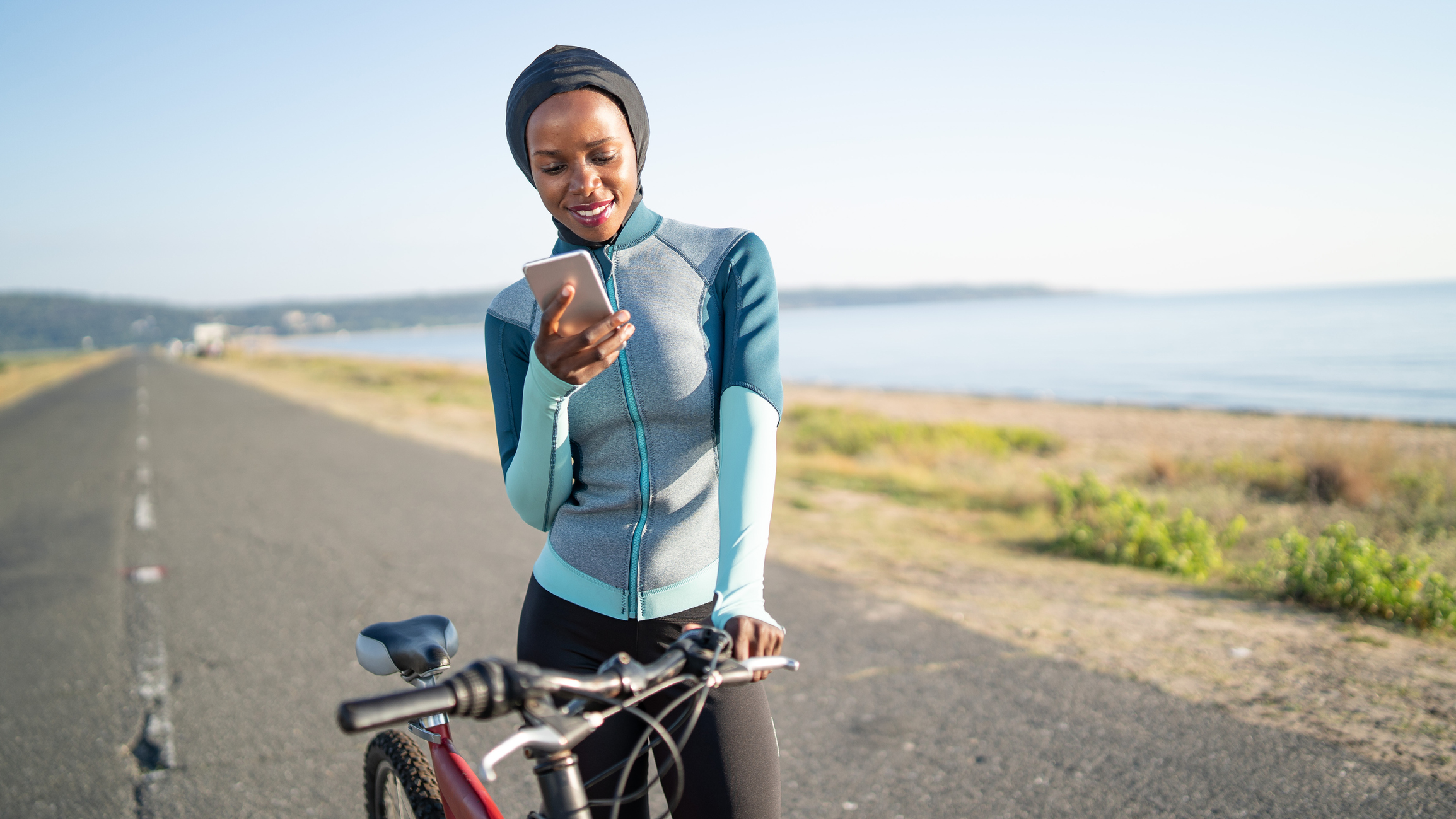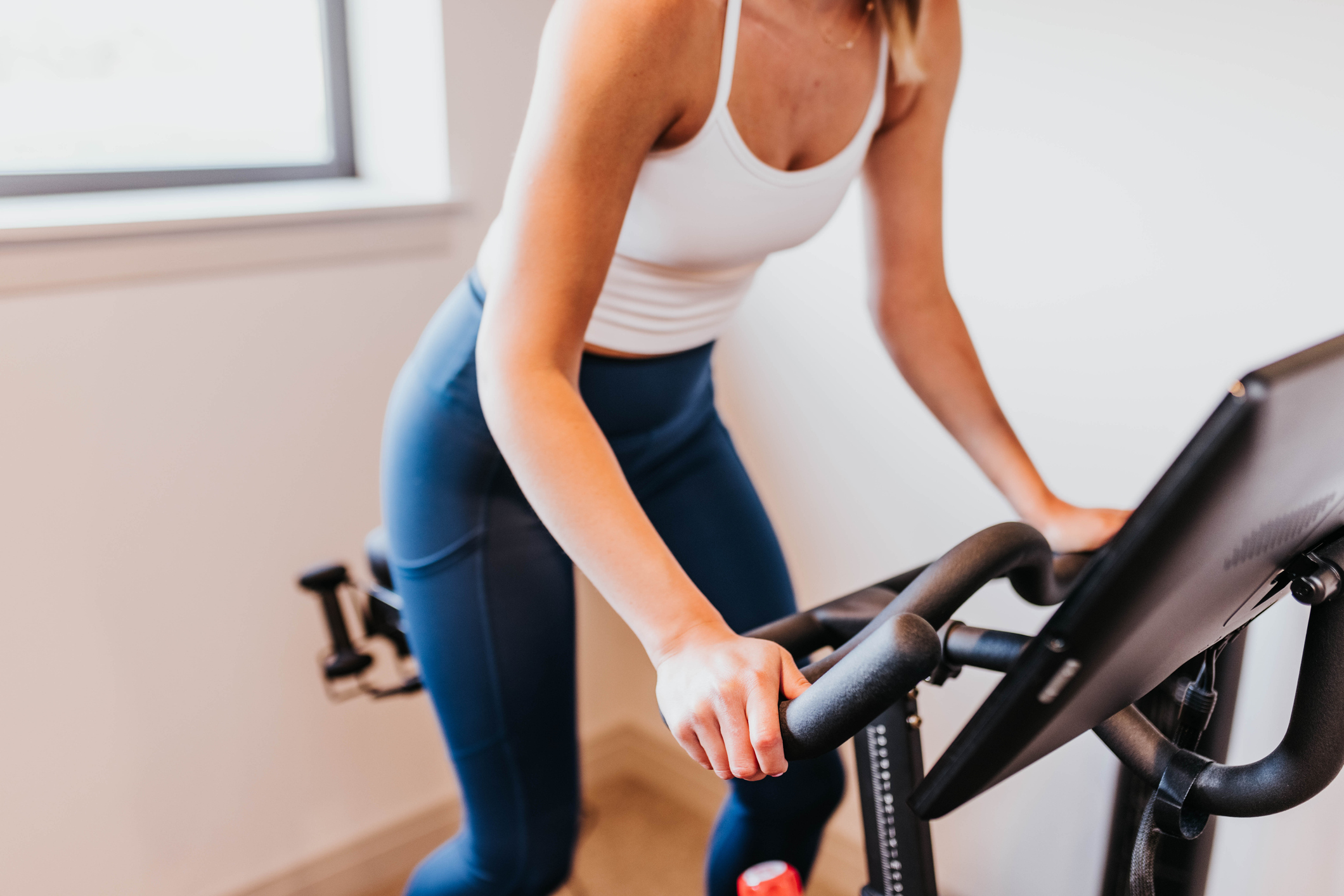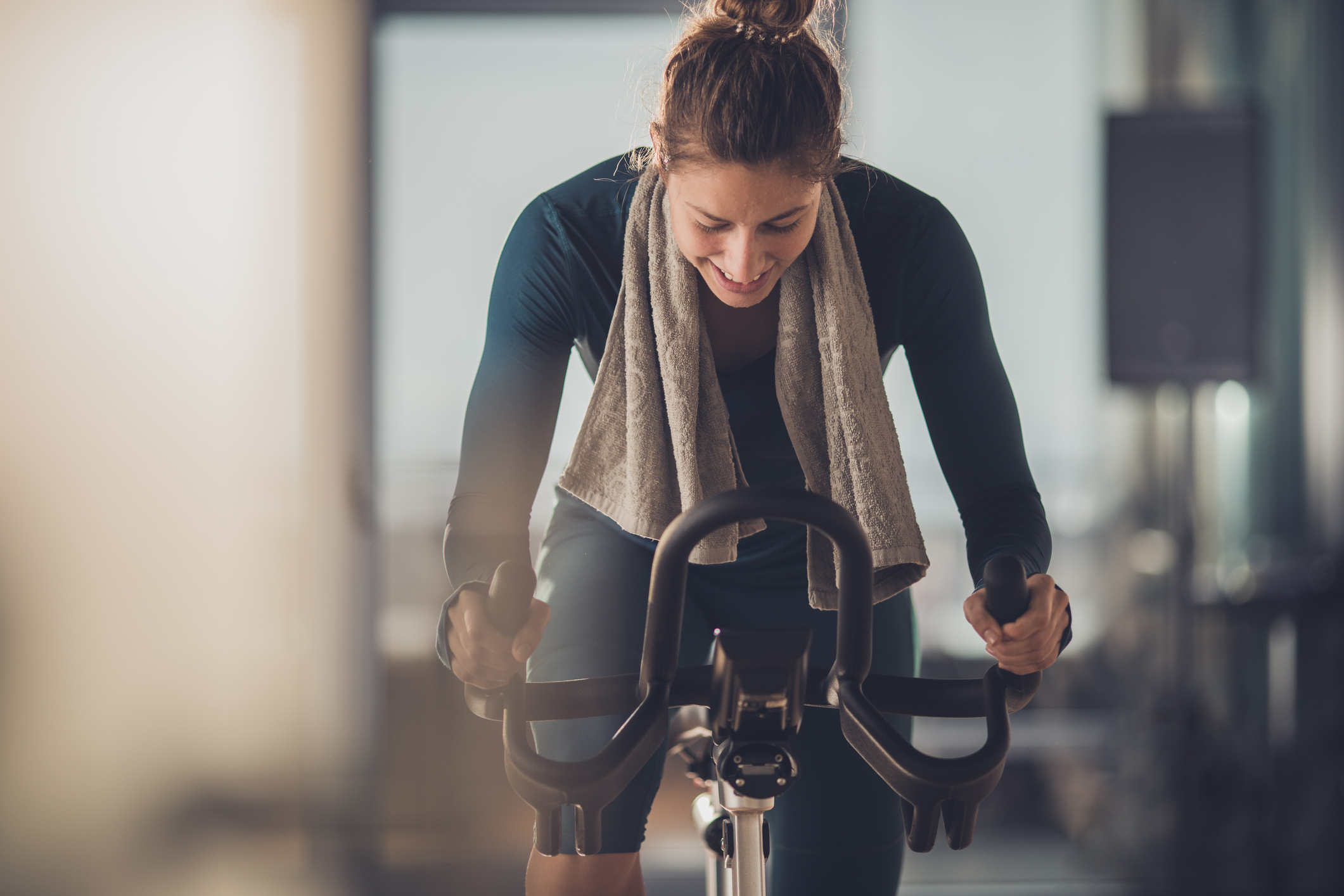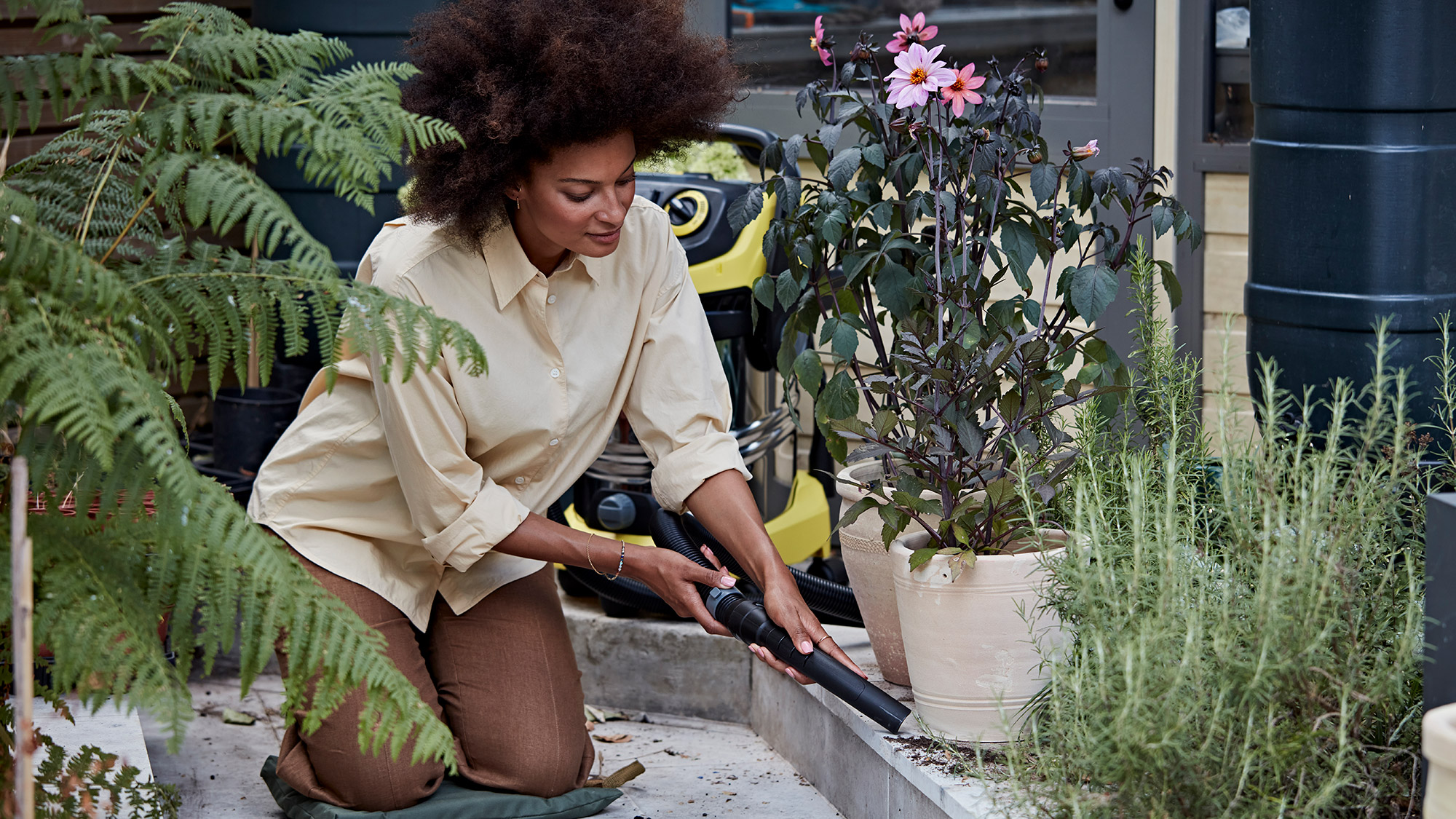Is cycling a good workout? Your need-to-knows, according to the experts
In partnership with SKODA


In partnership with SKODA
Cycling has exploded in popularity over recent years and the “bike boom” during the Covid-19 lockdown certainly helped.
According to government statistics, more people are cycling than ever. During the pandemic, 200% more people started cycling at weekends and 100% more people did the same during the week.
But it wasn’t just about cycling outdoors - far from it. As well as the hordes of people dusting off their bikes and getting some fresh air, the nation also saw an explosion in the popularity of indoor cycling. If you tried getting your hands on a spin bike, Peloton or Wattbike during the pandemic and were added to a lengthy waiting list, you’ll know what we mean.
Whether you’re a fair-weather cyclist, commuter or hardcore fan of zooming about on two wheels, there are many benefits - mental and physical - to be had from getting on your bike. Don’t just take our word for it though. Read on for the myriad reasons that cycling is a good workout according to the experts.
6 cycling benefits that prove it’s a great workout
1. It keeps your heart and lungs healthy
"Cycling is mainly an aerobic activity, which means it works your lungs and heart," explains Helen O’Leary, a physiotherapist and director of Complete Pilates.
Plus, aerobic exercise like cycling is also a great way to improve your cardiovascular health: in fact, riding a bike regularly can increase your cardio health by three to seven per cent, shares George Caines, head of education at Wattbike.
Not to mention the fact that cycling for just thirty minutes each day has been found to reduce the risk of several other conditions such as diabetes and kidney disease, he says.
"Plus, when cycling, your heart, lungs and blood vessels all work together at a level that can be completed for long durations of time," explains Dr Jinger Gottschall, director of applied research at Wahoo Fitness. And this is a benefit, because? Well, completing exercise at this intensity helps to reduce the risk of heart attacks, stroke and high blood pressure, she explains.

2. It's a low impact exercise
If you're coming back from injury or getting back into fitness after a break, then cycling is a perfect option. "Cycling puts a lot less stress on the tendons and joints than running," explains Caines.
O'Leary agrees, saying that the mixture of muscle strengthening and low impact on the joints makes it a great activity for those with stiff joints or arthritis. "The resistance on the peddles will help to strengthen your leg muscles and further protect your joints."
"The cyclic movement also increases the movement of the fluid in your joint to help reduce the stiffness," she explains.
3. It can improve your mental health
By now, most of you are aware of the positive link between exercise and mental health - those handy endorphins can really make a difference to your wellbeing.
"Regular exercise, particularly aerobic activities, have been found to reduce depression, anxiety, and stress," shares Dr Gottschall. If you're getting outside on your bike, then the benefits are even greater, she says. Whether you use your bike to commute or for more targeted training, getting outdoors, spinning your legs and taking in big lungfuls of air can help emotional wellbeing, say the experts.
As well as helping improve your mental health, cycling can also aid brain power, explains O'Leary. "There's a lot of research which highlights the benefit of being outside and, in turn, how it can help to reduce stress and anxiety. The fresh air can also help you to sleep better and consequently improves your mood and concentration."

4. It conditions and tones leg and hip muscles
Not only is cycling good for your heart and lungs, it's great for conditioning and toning your leg and hip muscles, too. In fact, it works some of the largest muscles in the body, including the muscles surrounding your hip (gluteal) and thigh (quadriceps, hamstrings), explains Dr Gottschall.
Dr Gottschall - a sports scientist who has coached both recreational and professional running and triathlon endurance athletes for the last 25 years - offers this advice to make your cycling workout hit all the notes. "Try and cycle across varying terrain (level and hills) as well as varying speeds (quick and cruise),” he advises. “That way, you’ll activate multiple different types of fibres and make everyday activities easier."
5. It's a good way to socialise
"Participating in any sport can be great for its social benefits and cycling is no different," highlights Caines.
As someone who regularly cycles with various friends and groups, I couldn't agree more. Whether you choose to gather a few mates together for a pootle to your nearest park, join a cycling club for the company on weekend rides or train for a race or sportive, there are so many opportunities to make getting on your bike a social activity, too.
Even indoor cycling offers the chance to catch up with friends and family while spinning your legs. Platforms such as Zwift and Peloton have functions that enable you to organise virtual meet-ups, while apps such as Discord allow you to chat as you sweat it out.

6. It helps with coordination and balance
Most of you can remember that first feeling of getting on a bike and worrying about falling off, right? So it likely won’t come as a huge surprise that cycling boosts your balance and coordination, too.
"Cycling requires core stability, limb coordination and balance to maintain your position on two wheels," explains Dr Gottschall. O'Leary agrees, highlighting the benefits cycling can have for improving balance, posture and coordination, as well as being a great activity to help with weight management.
This article was brought to you in partnership with SKODA.
Marie Claire Newsletter
Celebrity news, beauty, fashion advice, and fascinating features, delivered straight to your inbox!
Amy Sedghi is a freelance journalist, specialising in health and fitness, travel, beauty, sustainability and cycling.
Having started her career in The Guardian newsroom working with an award-winning team, Amy's proud to have reported on a variety of topics, speaking to a range of voices and travelling far and wide to do so. From interviews on ski lifts to writing up breaking stories outside courtrooms, Amy is used to reporting from a range of locations (she’s even been known to type up a story in a tent).
She also loves being active, spending time outdoors and travelling - with some of her favourite features she’s worked on combining all three. Cycling and eating her way round the Isle of Man, learning to sail on the Côte d'Azur and traversing the Caminito del Rey path in Spain are just some of her highlights.
Covering a diverse range of subjects appeals to Amy. One minute she may be writing about her online styling session with Katie Holmes’ stylist and the next she’s transporting readers to the basketball courts of Haringey where she joined a group trying to lower knife crime in the capital.
While at university, Amy was awarded The Media Society bursary. Following her stint at the Guardian, Amy worked at Google and as well as writing for Marie Claire, she regularly contributes interviews, features and articles to National Geographic Traveller, The Guardian, The Independent, The Telegraph, Stylist, Refinery29, Glorious Sport, Cycling Weekly and Rouleur.
When she’s not writing, Amy can be found trying to get through her towering stack of books-to-read, cycling down at Herne Hill Velodrome or looking for the next place to eat and drink with friends.
-
 How to manage skin changes during perimenopause and menopause, according to an expert
How to manage skin changes during perimenopause and menopause, according to an expertIn partnership with Vichy
By Alice Barraclough
-
 5 easy ways to eat a more plant-based diet, according to chef Bettina Campolucci Bordi
5 easy ways to eat a more plant-based diet, according to chef Bettina Campolucci BordiBy Niamh McCollum
-
 Give your home a new season glow-up with the latest autumn-winter collection from M&S
Give your home a new season glow-up with the latest autumn-winter collection from M&SPromotional feature with M&S
By Lizzie Hudson
-
 Here's how to maintain a pristine outdoor space
Here's how to maintain a pristine outdoor spaceIn partnership with Kärcher
By Marie Claire
-
 5 eco-conscious questions to ask yourself before buying something new
5 eco-conscious questions to ask yourself before buying something newBy Niamh McCollum
-
 How I want to help elevate the profile of women in cycling
How I want to help elevate the profile of women in cyclingKeira McVitty on recovering from illness, YouTube and why cycling is a sport that keeps on giving
By Marie Claire
-
 These are the key ways to go from passion to profit, straight from an expert
These are the key ways to go from passion to profit, straight from an expertIn partnership with GoDaddy
By Kate McCusker
-
 Why cycling is more than a hobby – it protects my family’s health
Why cycling is more than a hobby – it protects my family’s healthIn partnership with SKODA
By Marie Claire


